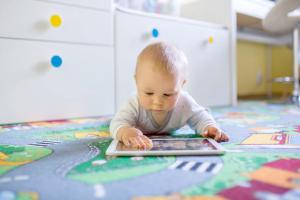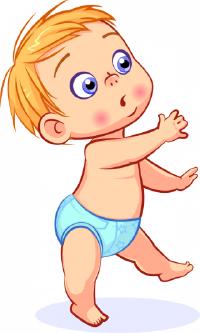Our Research
At the Child Vision Lab, we study the development of the visual system in normal-sighted individuals and patients with eye disease, by adapting state-of-the-art behavioural and neuroimaging approaches and developing novel in-house techniques.
Understanding new Treatments for Heritable Eye Disease
In order to give patients and clinicians the best possible chances of recovering vision after heritable eye disease, we are developing novel tests of visual function especially suited for young patients with low-vision. These new techniques may help researchers and clinicians evaluate new treatments (such as regenerative gene therapies) more efficiently and precisely, as well as improving patients’ experiences when compared to undergoing standard clinical tests of vision.
This project has already seen the development of a sensitive brain measure of visual function in pediatric patients with achromatopsia, a heritable eye disease which causes low-acuity and lack of colour vision from birth. Click Here to read the preprint of our evaluation of this method.
Researchers: Prof Tessa Dekker, Dr Pete R. Jones, Hugo Chow-Wing-Bom, Dr Roni Maimon-Mor, Marc Pabst, and Kim StaeubliDeveloping a Sensitive Visual System

How does visual information processing in the brain changes with age?
Answering this question is not only important for uncovering the mechanisms behind human vision, but it is also essential for understanding how new treatments might affect paediatric eye disease.
To achieve this, we use fun, custom-made vision tasks to measure children’s behaviour in response to visual stimuli, and state-of-the-art technology, such as functional Magnetic Resonance Imaging (fMRI) and electroencephalography (EEG), to measure participant’s brain activity. With this combination we can find out both how children’s visual abilities differ to those of adults, and how processes in the brain change to achieve adult-level vision.
Researchers: Prof Tessa Dekker, Georgia Milne, Hugo Chow-Wing-Bom, Dr Pete R. Jones, Marc Pabst, and Kim StaeubliExploring mental health in teenagers and young adults with vision impairment

How do acquired vision impairments impact mental well-being, and how can we improve treatment approaches to address this impact?
In this project, generously supported by Moorfields Eye Charity, we investigate the impact of different forms of vision impairment on wellbeing and mental ill-health. We will compare the wellbeing of people with acquired vision impairment (from conditions such as inherited retinal disease) to that of people with life long causes of low vision (such as albinism). This will ensure that low vision habilitation or rehabilitation can be optimised for people with different eye conditions.
Researchers: Dr Michael Crossland, Prof Tessa Dekker, Rachael Canavan, and Marc TibberGrowing a Connected Brain
How do young children use sensory information when making visuomotor decisions, and how can we better understand their ability to integrate different sensory inputs?

We use a mixture of psychophysics and brain imaging to investigate how children combine the information they receive from their eyes with the information they receive from their other senses. We know adults are able to combine different types of sensory information to improve their understanding of the world around them, for example when its dark outside we might use auditory information of a dog barking as well as visual information to more accurately work out where the dog is located.
Surprisingly, this ability to integrate sensory information does not emerge until late in childhood, at around 10 years old. We are interested in how young children use the sensory information available to them when making visuomotor decisions, and create fun touchscreen-computer games to investigate this. Our findings relate to real-world problems of choosing safe courses of action when engaging in what is known as movement under risk (e.g. crossing a road or playing sports).
Researchers: Prof Tessa Dekker, Dr Pete R. Jones, and Georgia MilneInvestigating Internally-Generated Vision
What are the mechanisms behind internally-generated visual representations and their impact on normal vision?

We are interested in how the brain can create visual representations, even when no visual stimulation is present. These internally-generated visual phenomena, including phosphenes (minor glimpses of light or colour) and visual hallucinations, are common in certain visual conditions, such as Charles-Bonnet syndrome, Parkinson’s, and Schizophrenia.
By improving our understanding of how and why these visual representations are generated, we hope to reveal how the mechanisms responsible may contribute to normal vision, and whether these mechanisms are plastic, i.e., are they constant, or do they change across developmental stages in children, or pharmaceutical interventions in adults?
Researchers: Prof Tessa Dekker and Oris ShenyanStudying Mental Health and Wellbeing of Parents and Children
How have prolonged COVID-19 restrictions impacted UK families, and how can we better understand the effects on parental mental health and child well-being?
The Child Vision Lab is collaborating with UCL Psychologists Professor Peter Fonagy and Dr Marc Tibber to research how prolonged COVID-19 restrictions have been affecting families in the UK. The project’s longitudinal questionnaire received an incredible response, with over 600 people taking part. We are extremely grateful to everyone who took the time to answer the online surveys - this support is crucial in helping us understand the longer-term effects of the pandemic on both adults and children.
We are currently analysing the data collected, with a specific focus on how socioeconimic factors may affect parental mental health and, in turn, child wellbeing. We hope that this important research can identify determiners of risk or resilience for mental health and wellbeing, improve our understanding of education and social care priorities, and inform policy makers for future public health decisions.
Researchers: Prof Tessa Dekker, Georgia Milne, and Dr Michael CrosslandSupporting Teenagers to Overcome Macular Problems (STOMP)
How can we improve the mental well-being of young people with vision impairment through tailored interventions and rehabilitation?
We know that vision impairment can have an impact on wellbeing and mental health of young people. In this project we are investigating the effect of participation, social connectedness and low vision rehabilitation on wellbeing, depression and anxiety for adolescents and young adults with inherited macular disease. We are also developing a user-led package of interventions to maximise good mental health and wellbeing in young people with vision impairment. This work is supported by the Macular Society.
Researchers: Prof Tessa Dekker, Dr Michael Crossland, and Marc TibberThe Feasibility of Home Monitoring of Vision by Children
Can children monitor their own vision at home, reducing clinic appointments and improving convenience for families and the environment?
We are developing accurate, enjoyable tests for children to use to test their own vision at home. These tests have the potential to reduce the number of eye clinic appointments children have to attend, which means less time away from school, less time away from work or caring responsibilities for parents, and a lower environmental impact associated with travelling to appointments.
Researchers: Dr Pete R. Jones, Dr Michael Crossland, and Prof Tessa Dekker